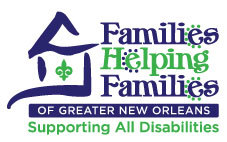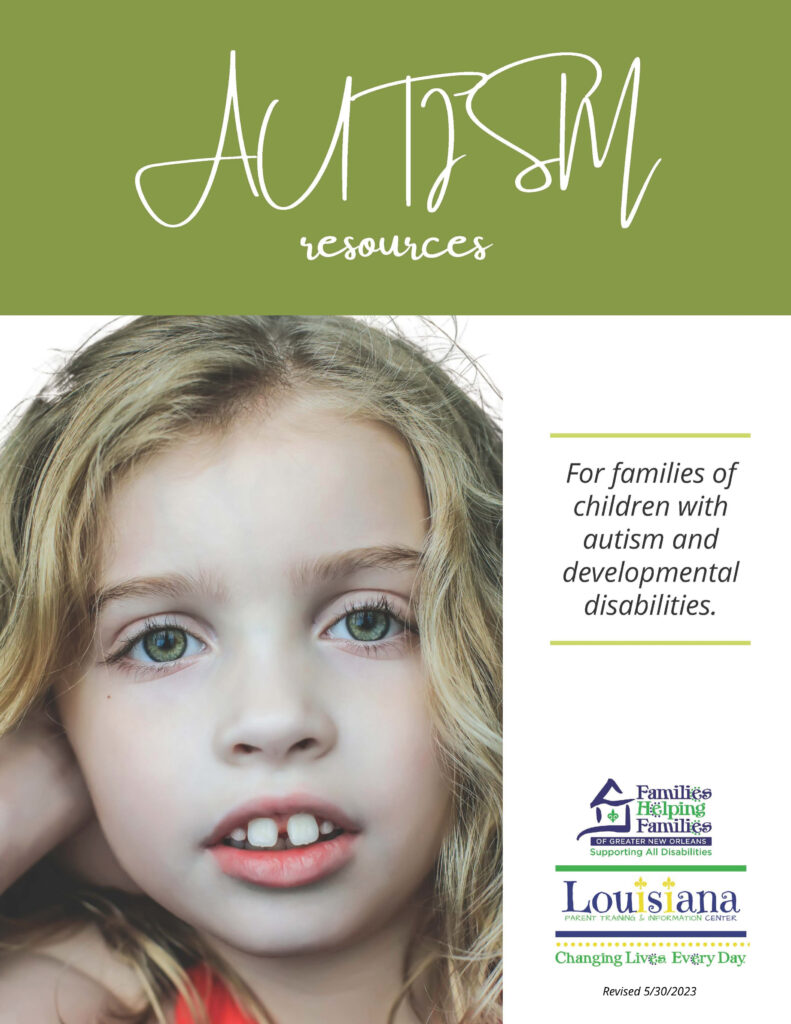Autism Spectrum Disorder (ASD)
Each of the disorders on the autism spectrum is a neurological disorder that affects a child’s ability to communicate, understand language, play, and relate to others.
They share some or all of the following characteristics, which can vary from mild to severe:
- Communication problems (for example, with the use or comprehension of language);
- Difficulty relating to people, things, and events;
- Playing with toys and objects in unusual ways;
- Difficulty adjusting to changes in routine or to familiar surroundings; and
- Repetitive body movements or behaviors.
These characteristics are typically evident before the age of three.
Children with autism or one of the other disorders on the autism spectrum can differ considerably with respect to their abilities, intelligence, and behavior. Some children don’t talk at all. Others use language where phrases or conversations are repeated. Children with the most advanced language skills tend to talk about a limited range of topics and have a hard time understanding abstract concepts. Repetitive play and limited social skills are also evident. Other common symptoms of a disorder on the autism spectrum can include unusual and sometimes uncontrolled reactions to sensory information—for instance, to loud noises, bright lights, and certain textures of food or fabrics.
What is Autism Spectrum Disorder?
Autism spectrum disorder (ASD) is a developmental disability caused by differences in the brain. Scientists do not know yet exactly what causes these differences for most people with ASD. However, some people with ASD have a known difference, such as a genetic condition. There are multiple causes of ASD, although most are not yet known.
There is often nothing about how people with ASD look that sets them apart from other people, but they may communicate, interact, behave, and learn in ways that are different from most other people. The learning, thinking, and problem-solving abilities of people with ASD can range from gifted to severely challenged. Some people with ASD need a lot of help in their daily lives; others need less.
According to the Diagnostic and Statistical Manual of Mental Disorders (DSM-5), a diagnosis of Autism spectrum disorder includes conditions that were previously considered separate — autism, Asperger’s syndrome, childhood disintegrative disorder, and pervasive developmental disorder not otherwise specified (PDD-NOS). These conditions are now all called autism spectrum disorder.
This informative Ask the Expert video from The National Center for Learning Disabilities offers top-line information about different disorders that fall under the Autism Spectrum (ASD) classification.
Is There Help Available?
Yes, there is! Both Part C and Part B of the Individuals with Disabilities Education Act (IDEA) contains explicit requirements for states to actively identify children and determine their eligibility for services
- Part C – EarlySTEPS | EarlySteps provides services to families living in Louisiana with infants and toddlers aged birth to three years (36 months) who have a medical condition likely to result in a developmental delay, or who have developmental delays. Children with delays in cognitive, motor, vision, hearing, communication, social-emotional or adaptive development may be eligible for services. EarlySteps services are designed to improve the family’s capacity to enhance their child’s development. These services are provided in the child’s natural environment, such as the child’s home, childcare, or any other community setting typical for children aged birth to 3 years (36 months).
- Part B – Special Education and Related Services | Services available through the public school system for school-aged children, including preschoolers (ages 3-21)
Under the Individual with Disabilities Education Act (IDEA), children with a disorder on the autism spectrum are usually found eligible for services under the category of “autism.”
IDEA specifically defines “autism” as follows:
…..a developmental disability significantly affecting verbal and nonverbal communication and social interaction, generally evident before age three, that adversely affects a child’s educational performance.
A child who shows the characteristics of autism after age 3 could be diagnosed as having autism if the criteria above are satisfied. [34 CFR §300.8(c)(1)]
Other characteristics often associated with autism are engaging in repetitive activities and stereotyped movements, resistance to environmental change or change in daily routines, and unusual responses to sensory experiences. The term autism does not apply if the child’s educational performance is adversely affected primarily because the child has an emotional disturbance, as defined in IDEA.
To have a school-aged child evaluated for an Autism Spectrum Disorder (ASD) or to access special education services for a school-aged child, we recommend getting in touch with your local public school system. Calling the elementary school in your neighborhood is an excellent place to start.
Families Helping Families of Greater New Orleans can assist you in navigating services through EarlySteps, the public school system, and provide you with additional supports if needed. Please call us for assistance at 504-888-9111, toll-free 1-800-766-7736, or by email at info@fhfofgno.org.
What about School?
Early diagnosis and intervention are very important for children with an ASD. As we’ve mentioned, under IDEA children with an ASD may be eligible for early intervention services (birth to 3) and an educational program appropriate to their individual needs.
In addition to academic instruction, special education programs for students with ASDs focus on improving communication, social, academic, behavioral, and daily living skills. Behavior and communication problems that interfere with learning often require the assistance of a professional who is particularly knowledgeable in the autism field to develop and help implement a plan which can be carried out at home and school.
The classroom environment should be structured so that the program is consistent and predictable. Students with an ASD learn better and are less confused when information is presented visually as well as verbally. Interaction with nondisabled peers is also important, for these students provide models of appropriate language, social, and behavioral skills. Consistency and continuity are very important for children with an ASD, and parents should always be involved in the development of their child’s program, so that learning activities, experiences, and approaches will be most effective and can be carried over into the home and community.
With educational programs designed to meet a student’s individual needs and specialized adult support services in employment and living arrangements, many children and adults with a disability on the autism spectrum grow to live, work, and participate fully in their communities.
- Learn about autism spectrum disorders—especially the specific disorder of your child. The more you know, the more you can help yourself and your child.
- Be mindful to interact with and teach your child in ways that are most likely to get a positive response. Learn what is likely to trigger a melt-down for your child, so you can try to minimize them. Remember, the earliest years are the toughest, but it does get better!
- Learn from professionals and other parents how to meet your child’s special needs, but remember your son or daughter is first and foremost a child; life does not need to become a never-ending round of therapies.
- If you weren’t born loving highly structured, consistent schedules and routines, ask for help from other parents and professionals on how to make it second nature for you. Behavior, communication, and social skills can all be areas of concern for a child with autism and experience tells us that maintaining a solid, loving, and structured approach in caring for your child, can help greatly.
- Learn about assistive technology (AT) that can help your child. This may include a simple picture communication board to help your child express needs and desires, or may be as sophisticated as an augmentative communication device.
- Work with professionals in early intervention or in your child’s school to develop an IFSP or an IEP that reflects your child’s needs and abilities. Be sure to include related services, supplementary aids and services, AT, and a positive behavioral support plan, if needed.
- Be patient and stay optimistic. Your child, like every child, has a whole lifetime to learn and grow.
- Learn more about the autism spectrum. The organizations listed in this publication can help. Especially check out whatever research they mention on effective instructional interventions and behavior.
- Make sure directions are given step-by-step, verbally, visually, and by providing physical supports or prompts, as needed by the student. Students with autism spectrum disorders often have trouble interpreting facial expressions, body language, and tone of voice. Be as concrete and explicit as possible in your instructions and feedback to the student.
- Find out what the student’s strengths and interests are and emphasize them. Tap into those avenues and create opportunities for success. Give positive feedback and lots of opportunities for practice.
- Build opportunities for the student to have social and collaborative interactions throughout the regular school day. Provide support, structure, and lots of feedback. If behavior is a significant issue for the student, seek help from expert professionals (including parents) to understand the meanings of the behaviors and to develop a unified, positive approach to resolving them.
- Have consistent routines and schedules. When you know a change in routine will occur (e.g., a field trip or assembly) prepare the student by telling him or her what is going to be different and what to expect or do.
- Work together with the student’s parents and other school personnel to create and implement an educational plan tailored to meet the student’s needs. Regularly share information about how the student is doing at school and at home.
Additional Resources
Families Helping Families of Greater New Orleans, the Louisiana Parent Training and Information Center, put together this statewide comprehensive resource guide for families who have children with autism and other developmental disabilities. You will find a statewide list of everything from ABA providers, to early intervention services, developmental disability services, and more.
We are constantly updating and monitoring this resource to provide the latest information and resources.
Helpful Organizations
Autism Society of America – The Autism Society relies upon the tremendous work and support of its local and state affiliates. Local and state affiliates are the primary approach through which the Autism Society helps individuals and families throughout the United States.
Louisiana affiliates:
Autism Society of Greater New Orleans (ASGNO)
Autism Society of Greater Baton Rouge
Autism Society North Louisiana
Autism Speaks – Autism Speaks is dedicated to promoting solutions, across the spectrum and throughout the life span, for the needs of individuals with autism and their families. We do this through advocacy and support; increasing understanding and acceptance of people with autism, and advancing research into causes and better interventions for autism spectrum disorder and related conditions.
National Autism Association – The mission of the National Autism Association is to respond to the most urgent needs of the autism community, providing real help and hope so that all affected can reach their full potential.

